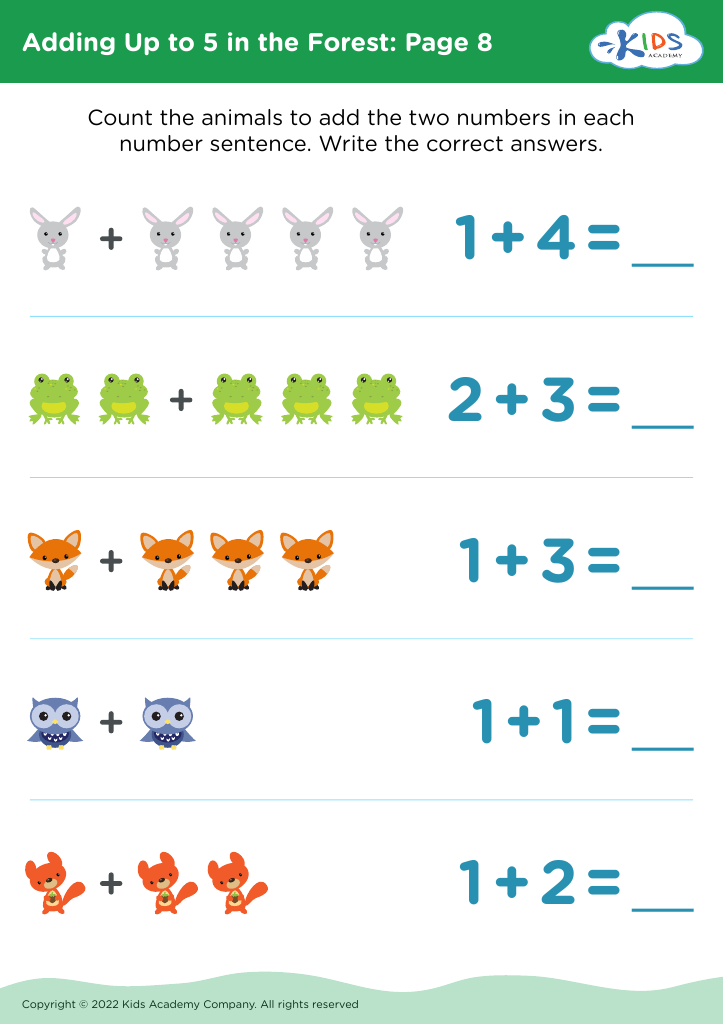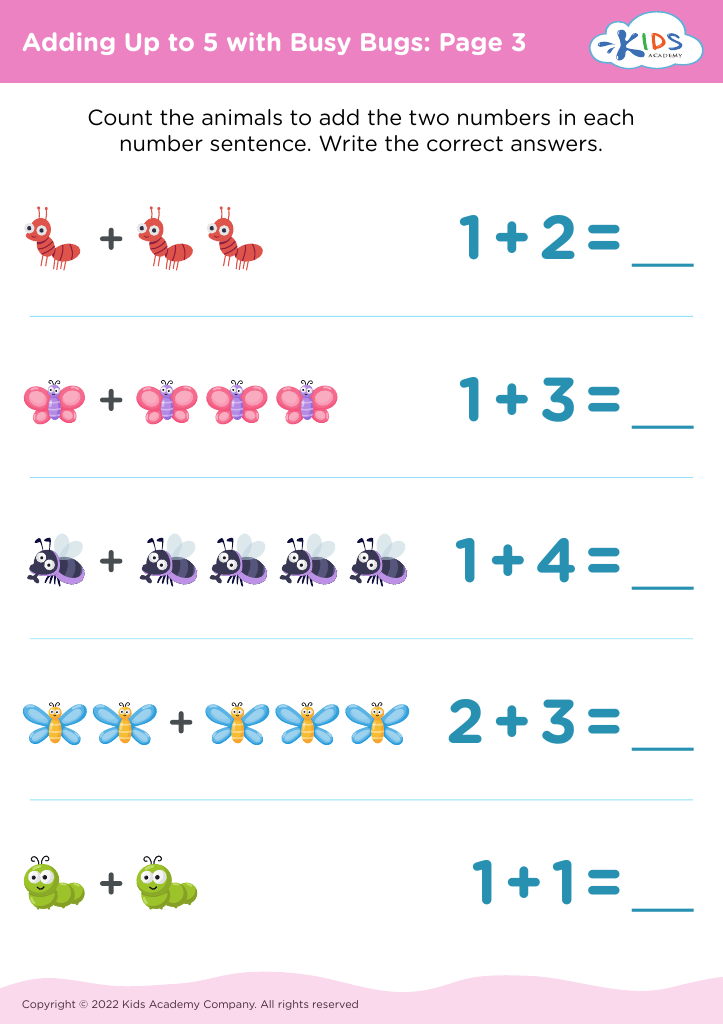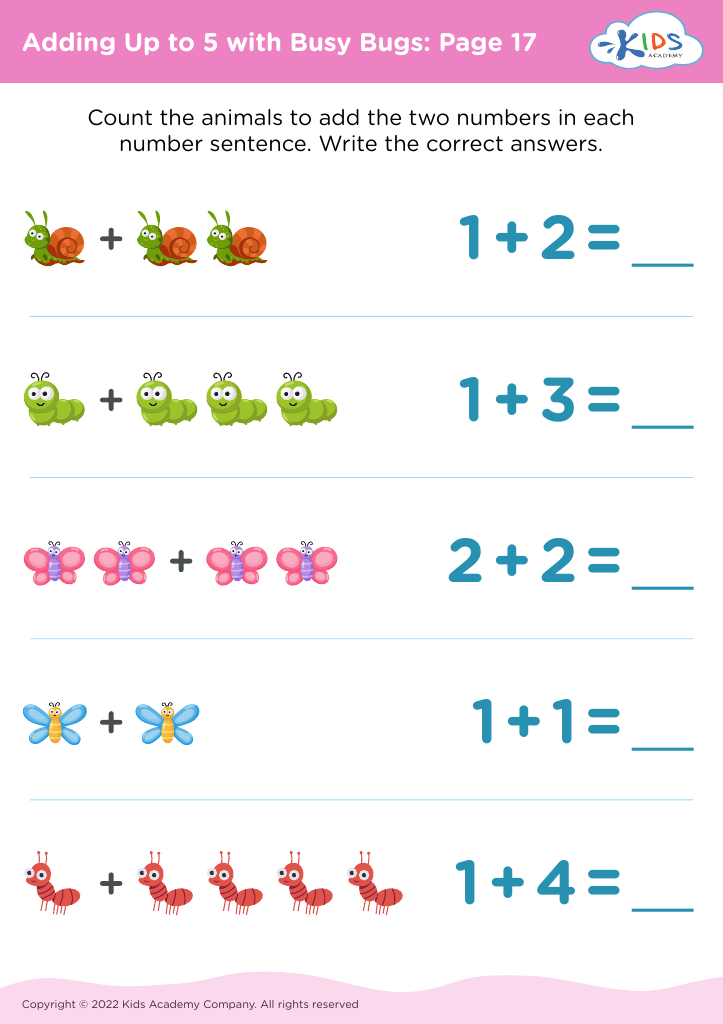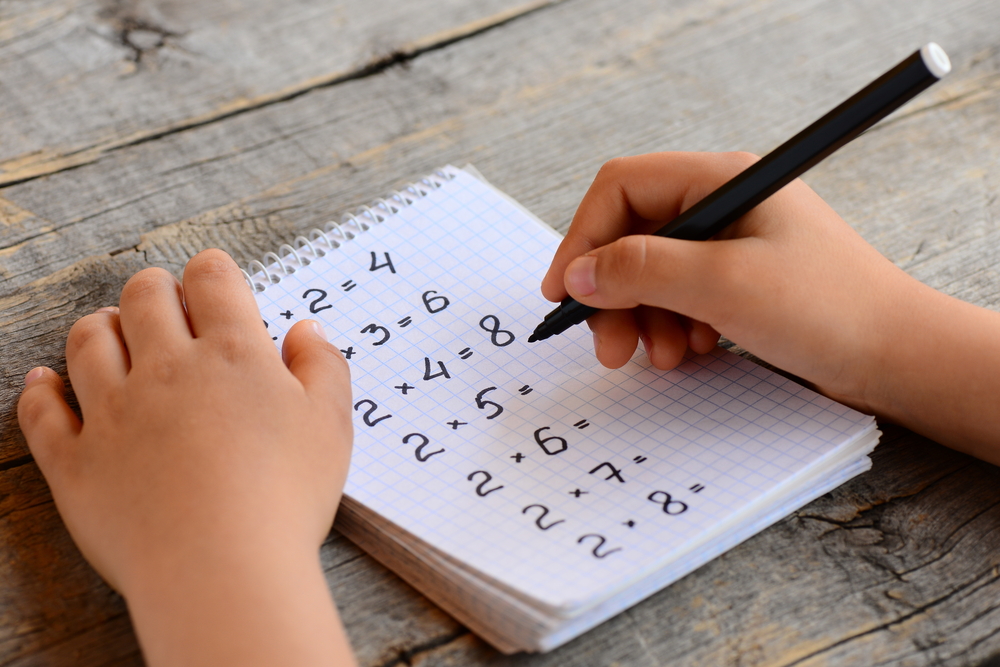Developing Concentration Addition & Subtraction Worksheets for Ages 4-8
6 filtered results
-
From - To
Developing Concentration Addition & Subtraction Worksheets for Ages 4-8 are designed to enhance young learners' math skills while boosting their focus and attention. These engaging worksheets offer a variety of fun activities that challenge students to solve addition and subtraction problems, helping to improve accuracy and speed. Tailored for kids aged 4-8, the exercises incorporate vividly illustrated problems that make learning enjoyable and less intimidating. The goal is to create an engaging learning experience that not only reinforces foundational math concepts but also sharpens concentration, paving the way for academic success in future studies.


Count and Subtract Worksheet
Parents and teachers should prioritize developing concentration, addition, and subtraction skills in children aged 4-8 due to the foundational role these skills play in overall cognitive and academic development. Firstly, concentration is essential for young children as it enhances their ability to focus and follow through on tasks, which is critical for successful learning in all subject areas. Improved concentration helps kids stay attentive during learning activities, making the acquisition of new skills smoother and more effective.
Furthermore, addition and subtraction are fundamental components of early math education that form the bedrock for more complex mathematical concepts. Early mastery of these skills fosters a positive attitude toward math and boosts confidence, making math less intimidating as they progress in their education. Building strong numeracy skills at a young age supports logical reasoning, problem-solving, and critical thinking abilities.
Developing these skills early on prepares children for future academic challenges, ensuring they are better equipped for classroom expectations and standardized assessments. By focusing on these critical areas during the formative years, parents and teachers help children develop a strong educational foundation, paving the way for long-term academic success and a lifelong love of learning.






 Assign to My Students
Assign to My Students
















